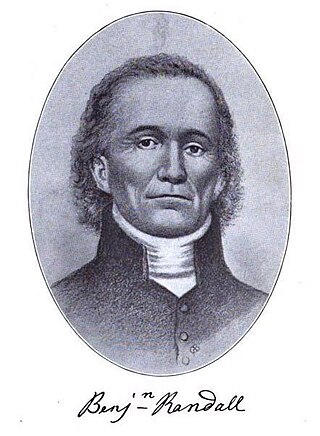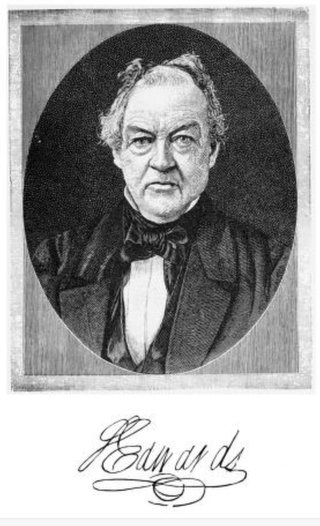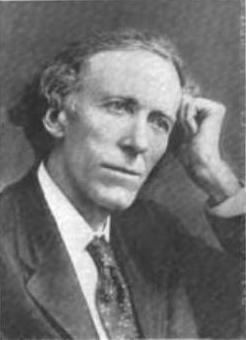
Free Will Baptists are a group of General Baptist denominations of Christianity that teach free grace, free salvation and free will. The movement can be traced back to the 1600s with the development of General Baptism in England. Its formal establishment is widely linked to the English theologian, Thomas Helwys who led the Baptist movement to believe in general atonement. He was an advocate of religious liberty at a time when to hold to such views could be dangerous and punishable by death. He died in prison as a consequence of the religious persecution of Protestant dissenters under King James I.

The Separate Baptists were an 18th-century group of Baptists in the United States, primarily in the South, that grew out of the Great Awakening.

General Baptists are Baptists who hold the general or unlimited atonement view, the belief that Jesus Christ died for the entire world and not just for the chosen elect. General Baptists are theologically Arminian, which distinguishes them from Reformed Baptists.

Robert Mills was a South Carolina architect known for designing both the first Washington Monument, located in Baltimore, Maryland, as well as the better known monument to the first president in the nation's capital, Washington, DC. He is sometimes said to be the first native-born American to be professionally trained as an architect. Charles Bulfinch of Boston perhaps has a clearer claim to this honor.
John Frederick Weishampel Jr. was an American printer and publisher based at 484 West Baltimore Street in Baltimore. Weishampel was a third-generation Prussian-American and son of Rev. John Frederick Weishampel.
Chinquapin is an unincorporated community and census-designated place (CDP) located adjacent to the Northeast Cape Fear River in Duplin County, North Carolina, United States. It was first listed as a CDP in the 2020 census with a population of 86.

Shubal Stearns, was a colonial evangelist and preacher during the Great Awakening. He converted after hearing George Whitefield and planted a Baptist Church in Sandy Creek, Guilford County, North Carolina. Stearns' highly successful ministry was related to the rise and expansion of the Separate Baptists — especially in much of the American South.

Robert Brank Vance, nephew of the earlier Congressman Robert Brank Vance (1793–1827) and brother of Zebulon B. Vance, was a North Carolina Democratic politician who served as a member of the U.S. House of Representatives for six terms (1873–1885). He was chairman of the United States House Committee on Patents. During the American Civil War, Vance served in the Confederate States Army, where he reached the rank of brigadier general.

Samuel Edwards was an American politician from Pennsylvania who served as a member of the U.S. House of Representatives from Pennsylvania's 1st congressional district from 1819 to 1823 and from Pennsylvania's 4th congressional district from 1823 to 1827.
Morgan Edwards was an American historian of religion, Baptist pastor, notable for his teaching on the 'rapture' before its popularization by John Nelson Darby (1800–1882).

Leonard Gaston Broughton was a fundamentalist Baptist minister, medical doctor, founder of Tabernacle Baptist Church in Atlanta, Georgia and of Tabernacle Infirmary, which later became Georgia Baptist Hospital.

Needham Bryant Broughton was an American printer, temperance activist, and politician who served as a North Carolina state senator from 1901 to 1903. He co-owned a prosperous printing business, Edwards & Broughton, and was a member of several commercial organizations. An active member in the North Carolina Baptist community, he served as secretary of the Southern Baptist Convention for approximately 30 years. Broughton was born in 1848 near Auburn, North Carolina. Eight years later his family moved to Raleigh, and he enrolled in public school. After several years of work in printing offices which saw him employed in Washington, D.C., and New York City, Broughton returned to Raleigh and married. In 1872 he and C.B. Edwards established the Edwards & Broughton Printing Company. It quickly became one of the largest printers in North Carolina, and for a time it did most of the printing and binding of state publications.

The situation of the Catholic Church in the Thirteen Colonies was characterized by an extensive religious persecution originating from Protestant sects, which would barely allow religious toleration to Catholics living on American territory. Nonetheless, Catholics were a part of America's history from the beginning, especially in Maryland, a colony founded by Catholics.

Welsh Tract Old School Baptist Church is a historic Primitive Baptist church, located on Welsh Tract Road in Newark, New Castle County, Delaware. It was built by Welsh settlers in 1746 and is a simple rectangular brick building with a wood-shingled jerkinhead roof.
Jersey Settlement Meeting House, also known as Jersey Baptist Church, is a historic church and meeting house located near Linwood, Davidson County, North Carolina. The Baptist congregation was founded around 1755 by settlers from New Jersey. Among them was Benjamin Merrill, a local leader in the Regulator movement from 1765 to 1771, who was captured and executed following the Battle of Alamance.

Liberty Universalist Church and Feasterville Academy Historic District is a national historic district located near Winnsboro, Fairfield County, South Carolina. The property encompasses four buildings constructed between 1831 and 1845. They are the Liberty Universalist Church and three buildings associated with the Academy: a boarding house, a kitchen, and a school building. The buildings were constructed by the Feaster family.
Thomas Grantham (1634–1692) was an English General Baptist minister, and theologian. He had access to Charles II of England, and made petitions on behalf of Baptist beliefs.
James Ransom (1740–1810) was part of the Regulator movement and a delegate to the 2nd North Carolina Provincial Congress from Bute County, North Carolina in 1775, as well as a member of the Bute County Committee of Safety alongside Jethro Sumner. He was the step-father of Nathaniel Macon and a neighbor of Benjamin Hawkins. He married Macon's mother Priscilla Jones after the death of Gideon Macon.
Captain Benjamin Merrill was an American military officer, gunsmith and planter who served in the militia of Rowan County, North Carolina. He sided with the Regulator Movement during the American Revolution. He was captured following the conflict ending Battle of Alamance on May 16, 1771, and shortly thereafter ordered to be executed as a rebel and traitor by Governor William Tryon.
Farrar is an unincorporated community in Edgecombe County, North Carolina, United States. The town was probably named for Owen Cicero Farrar, a leading member of the local Baptist church and businessman who ran the general store, the Hotel Farrar, and founder of the Tarboro Cotton Factory constructed in 1888 in nearby Tarboro.










